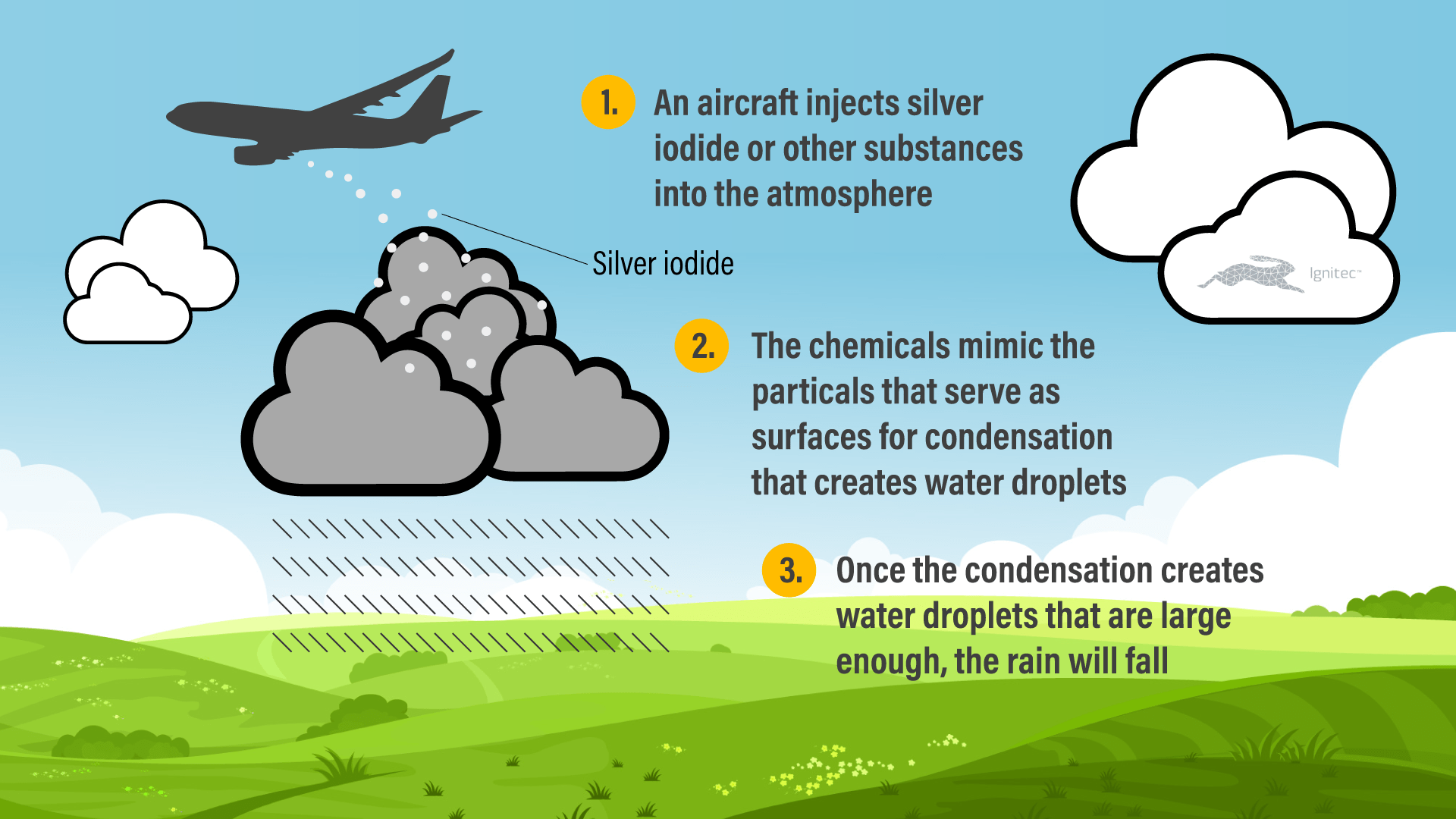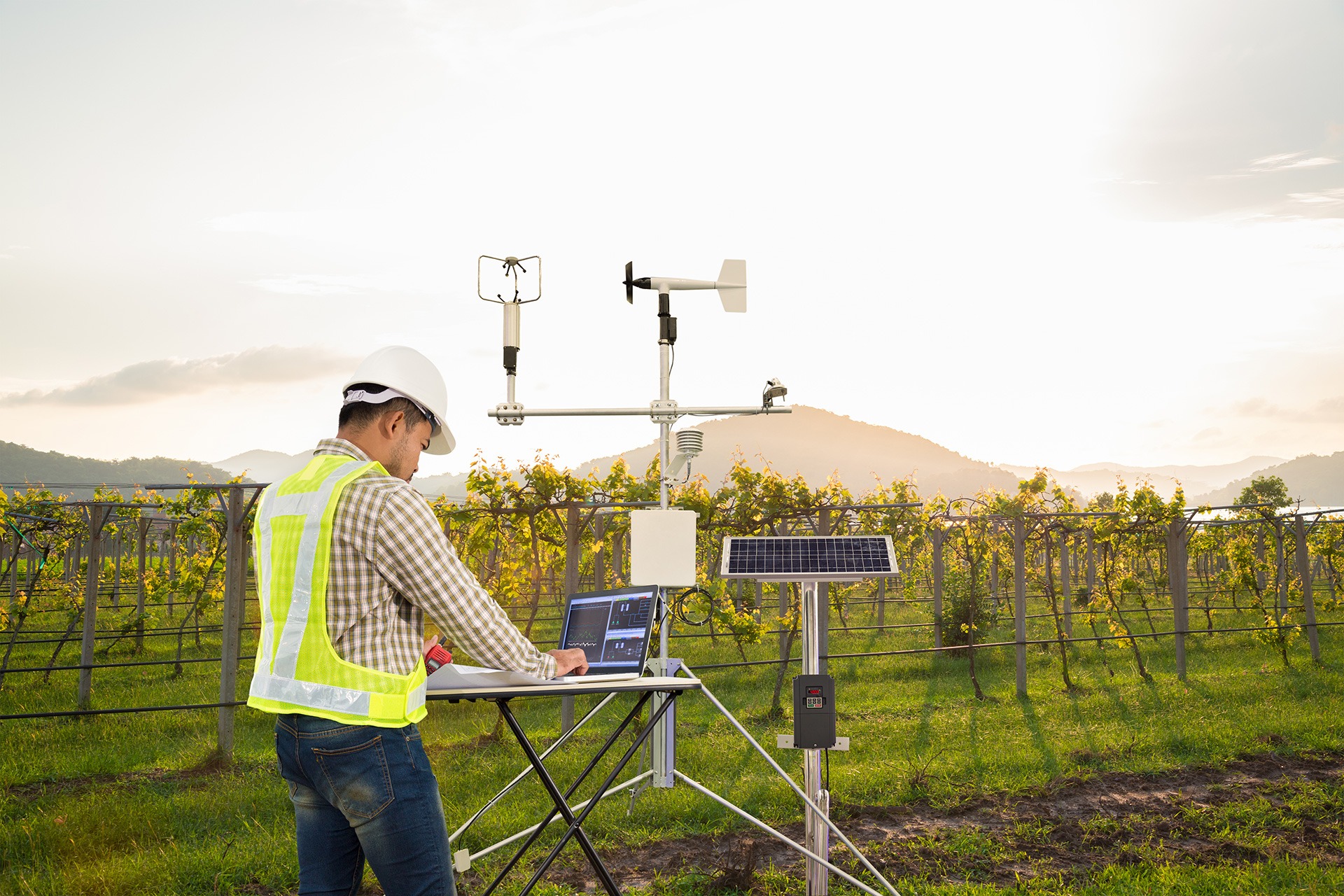The hidden costs behind cloud seeding
Reading time 10 mins
Key Points
- Countries solving the problems of drought and desertification by using cloud seeding technologies to make it rain
- It keeps agricultural production steady, provides water security, improves the standard of living for people living in vulnerable areas
- Negative impacts (e.g. health, environment, international conflict) have not been determined and need further study
- Benefits of IoT for weather monitoring systems and micro-climate management
- Could rain enhancement technologies cause more problems than they solve?

Ben Mazur
Managing Director
The hidden costs behind cloud seeding
Desertification (a process of ecological degradation where fertile land loses its vegetation cover, becomes arid, and is more susceptible to erosion) is a global issue that the UN ranks as one of the greatest environmental challenges of our time [1]. As extended periods of drought – which are becoming more prevalent due to climate change – are one of the contributing factors, many countries are looking at rain enhancement technologies such as cloud seeding to provide solutions.
Cloud seeding is a type of ‘climate engineering’ that modifies the weather. By using aircraft or drones to introduce chemicals (e.g. silver iodide, potassium iodide, dry ice) to clouds, water droplets cluster around clouds, change their structure, and increase the chances of rain [2]. Which, on the surface of things, sounds great! Rain keeps land fertile and, in theory, should reduce desertification. But what are the hidden costs behind this silver lining, and if there are, isn’t it a small price to pay for the challenges we face?
Encroaching deserts and desertification aren’t the same phenomena
Although given the same definitions and often used interchangeably, they’re different. Technically, desert encroachment is when disturbances caused by people (e.g. overgrazing), cause an existing desert to advance beyond its natural state. Desertification is when previously fertile land becomes degraded (by the same human activities) and takes on desert-like characteristics. Deserts themselves are important and diverse ecosystems that play an important role in our planet’s overall health – they need to be preserved and protected. Desertification, however, is an entirely different matter.
The Pros and Cons of Rain Enhancement Technology
Technology makes life easier and, in many ways, more sustainable too. By being able to harness the power of the sun and wind for solar and turbine energy respectively, we’ve been able to accomplish much in the way of clean, renewable energy. Why should clouds be any different?
Last year, three-quarters of the western US experienced the worst drought in 20 years [3]. This increased fire dangers, required severe water restrictions, compromised agricultural systems, and impacted ecosystems. As a result, states such as Wyoming and Utah turned to cloud seeding technologies to add water to their basins and aim to use it as part of their ‘drought contingency plan’ in the future. While experts agree that it isn’t a perfect solution as it does nothing to address the root causes (e.g. climate change), it nevertheless helps. Other than rain creation and reducing the impact of drought, this technology has other benefits [4]:
- Keeps agricultural production steady and boosts the economy
- Helps to regulate the weather by reducing cloud cover, evaporating fog, and clearing pollution
- Improves the standard of living for people living in arid areas
- Reduces the threat that heavy storms (e.g. hailstorms) have on crops by changing the formation of storm clouds
- Can be used to create stable micro-climates that enable a specific region (e.g. airports) to operate optimally
- Doesn’t necessarily require the use of aircraft. It can also be done using ground-based machines and drones.
This being said, cloud seeding is a controversial technology that sceptics caution needs more development and study:
- What are the consequences of introducing chemicals into the clouds that we get our drinking and bathing water from? How does this affect the natural environment, the plants and animals living there, and the food that we get from it?
- What happens when wind pushes seeded clouds to an area where it wasn’t intended, not needed, and unauthorised?
- Can making it rain in one region deprive another of theirs? And if it does, this could cause international conflict (i.e. one nation accuses another of having ‘weaponised the weather’) by violating the Convention on the Prohibition of Military or Any Other Hostile Use of Environmental Modification Techniques (ENMOD)
- When seeding clouds with dry ice, which is essentially CO2, is that not simply adding more to the greenhouse emissions?
- The technology is expensive. Developing countries and communities in regions that arguably need it the most (e.g. sub-Saharan Africa) can’t afford it
Even though the disadvantages are potentially catastrophic, it’s well worth looking into the technology driving it. Can cloud seeding technologies be used in less problematic ways?
Cloud seeding, IoT and weather monitoring systems
The United Arab Emirates (UAE) is one of the world leaders when it comes to pioneering – and financing- technologies to transform dry and inhospitable land into cosmopolitan oases. Their £10.8 million rain-making project as part of their “quest to ensure water security” [5] approaches cloud seeding differently:
- Uses drones equipped with electrical instruments and customised sensors
- Drones are lightweight and small, which makes them more efficient and cost-effective
- Electric charges released into the clouds have less of a negative environmental impact than chemicals do
- Drones have a quick deployment time, can also fly close to hurricanes and storms and send important information to ground control stations in real-time.
Another useful – and less controversial – application of cloud seeding technology is in the management of micro-climates (the distinctive climate of a small-scale area, e.g. national parks, airports, coastal regions, forests). IoT devices use the same rain management technologies to monitor the weather and are incredibly useful [6]:
- Devices that use sensors and automotive electronic equipment to collect, store, and track data on all the different characteristics of the climate (temperature, wind speed/direction, rain etc.)
- The system analyses the data generates accurate microclimate forecasts, and displays it in real-time on a screen
- Allows sensor devices to be placed in areas that have been difficult/dangerous to access geographically and collect data safely
- Wireless weather monitoring allows information to be shared with businesses and homes that are impacted by severe weather changes, quickly
- Processes can be fully automated and don’t require much human attention, making them cost-efficient, time-saving, and smart
Weather monitoring systems also have useful applications at an individual level. Not only can you have your own weather station at home, but you can use it to complement and connect to other IoT devices. For example, a smart garden with sensors that are set to turn on the sprinklers when the soil moisture is at a specific level, can receive a message from the smart weather station to not do so on days when rain is forecast.
Climate Engineering: Silver Lining or Silver Bullet?
As with most things, it’s seldom the technology that presents problems. But rather how we use it. Cloud seeding to create rain has many benefits but also potentially adverse consequences that remain to be determined. Interrelated technologies such as weather monitoring systems that help to manage micro climates appear to be more of a win-win.
What’s your take? Are rain enhancement technologies a solution to the problems we’re facing as a result of climate change, or will they simply make them worse?
- United Nations. (2022, June 17). Desertification and its effects. Https://Www.Un.Org/. Retrieved June 17, 2022, from https://www.un.org/en/observances/desertification-day/background
-
Khan, F. (2022, January 4). Many countries employ cloud-seeding as weather experiments escalate globally. Medium. Retrieved August 10, 2022, from https://medium.com/open-source-x/many-countries-employ-cloud-seeding-as-weather-experiments-escalate-globally-1dc6b006f177
-
Milman, O. (2021, March 23). Make it rain: US states embrace “cloud seeding” to try to conquer drought. The Guardian. https://www.theguardian.com/environment/2021/mar/23/us-stated-cloud-seeding-weather-modification
-
Various Pros and Cons of Cloud Seeding. (n.d.). Conserve-Energy-Future.Com. https://www.conserve-energy-future.com/pros-cons-of-cloud-seeding.php
-
M. Darrow (2021, August 1). Dubai is Making it Rain With Cloud Seeding Drones. Flykit Blog. Retrieved August 10, 2022, from https://blog.flykit.app/dubai-creates-rain-cloud-seeding-drones/
-
benchmarklabs. (2022, April 7). IoT Based Weather Monitoring System For Micro-Climate Forecasting. Retrieved August 10, 2022, from https://www.benchmarklabs.com/blog/micro-climate-forecasting/




